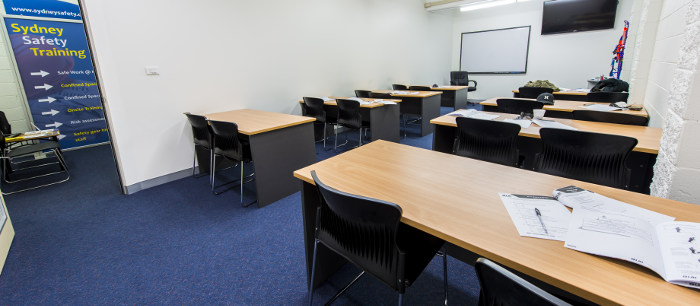When you have your staff trained, standards stipulate the training must be competency based training. This means that the training organisation must accredit through a Registered Training Organisation (RTO) and therefore must issue a certification that has national competencies listed.
Beware, there are some training companies promoting confined space training and state the training complies with AS2865 and do not issue competencies. AS2865 states that all training must be competency based training, and therefore competencies must be issued.
Competency Based Training
Competency-based assessment is commonly linked to competency-based training and forms the basis of the Vocational Education and Training (VET) system inAustralia. Competency-based assessment was introduced in 1991 by the National Training Board (now called the Australian National Training Authority) and represented a significant shift in assessment practices that had previously been based on the measurement of knowledge rather than the application of knowledge (Cognology 2000).
Assessment under a competency based approach, is the process of collecting evidence and making judgments on the nature and extent of progress towards the performance requirements set out in a standard (VEETAC cited in ACTRAC 1994, p.1).
Assessment is based on the actual skills and knowledge a person can demonstrate in the workplace. Where competency standards for an industry/occupation do not exist, performance can be assessed against a set of criteria such as award classifications, standard operating procedures and performance agreements (NSDC Commonwealth of Australia 1995). In a competency-based assessment system, competencies possessed by a person are recognized no matter how or where they were acquired (Community Services and Health Training Australia 1999)
What is a competency?
The broad concept of industry competency concerns the ability to perform particular tasks and duties to the standard of performance expected in the workplace. Competency requires the application of specified skills, knowledge and attitudes relevant to effective participation in an industry, industry sector or enterprise.
Competency covers all aspects of workplace performance and involves performing individual tasks; managing a range of different tasks; responding to contingencies or breakdowns; and, dealing with the responsibilities of the workplace, including working with others. Workplace competency requires the ability to apply relevant skills, knowledge and attitudes consistently over time and in the required workplace situations and environments. In line with this concept of competency Training Packages focus on what is expected of a competent individual in the workplace as an outcome of learning, rather than focusing on the learning process itself.
Competency standards in Training Packages are determined by industry to meet identified industry skill needs. Competency standards are made up of a number of units of competency each of which describes a key function or role in a particular job function or occupation. Each unit of competency within a Training Package is linked to one or more AQF qualifications.
Competencies issued on successful completion of Sydney Safety Training courses may include:
Confined Space Training
RIIWHS202E Enter and work in a confined space
MSMPER205 Enter confined space
MSMPER200 Work in accordance with an issued permit
MSMWHS201 Conduct hazard analysis
RIIRIS201E Conduct local risk control
PUAFIR210 Prevent injury
MSMWHS217 Gas test atmospheres
MSMPER300 Issue work permits
HLTAID009 Perform cardiopulmonary resuscitation
MSMWHS216 Operate breathing apparatus
PUAFIR207 Operate breathing apparatus open circuit
PUASAR025 Undertake confined space rescue
MSMPER202 Observe permit work
Safe Work at Heights Training
RIIWHS204E Work Safely at Heights
Low Voltage Rescue
UETDRMP007 – Perform rescue from a live LV panel https://sydneysafety.com.au/confined-space-training-courses/what-does-competency-based-training-mean/
UETDREL006 – Work safely in the vicinity of live electrical apparatus as a non-electrical worker
HLTAID009 – Provide cardiopulmonary resuscitation
Lock out Tag Out
RIISAM202E Isolate and access plant.
Asbestos Removal
CPCCDE3014 – Remove non-friable asbestos
CPCCDE3015 – Remove friable asbestos
CPCCDE4008 Supervise Asbestos Removal
When we issue the above competencies, we are responsible to ensure our training is of the highest quality, and your staff are therefore properly training. If you are not satisfied with the quality of training, there is a formal complaint system.
Student Information
As a student in Australia’s vocational education and training (VET) sector, you should expect high-quality training in your area of interest, leading to a qualification that improves your prospects of gaining the job you want or provides a pathway to further study.
Complaints
As national regulator for the VET sector, ASQA can investigate certain types of complaints about registered training organisations (RTOs) when these expectations are not met.
If you are not satisfied with the quality of service or training being provided by an RTO, you can lodge a complaint with us and, if the RTO is within ASQA’s jurisdiction, we will consider it. If the RTO is not within ASQA’s jurisdiction, you will be directed to the relevant state regulator.
ASQA is authorised to deal with complaints about:
- the information provided to you by an RTO about course(s)
- the delivery and assessment of the training you have received
- the qualifications you have or have not been issued.



